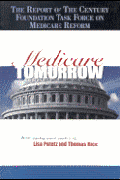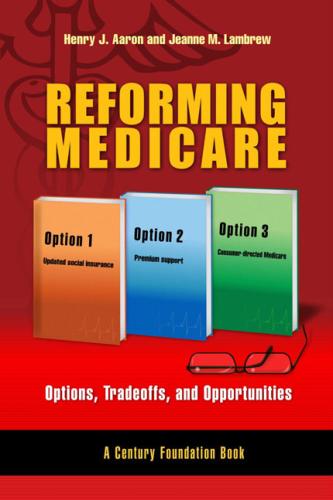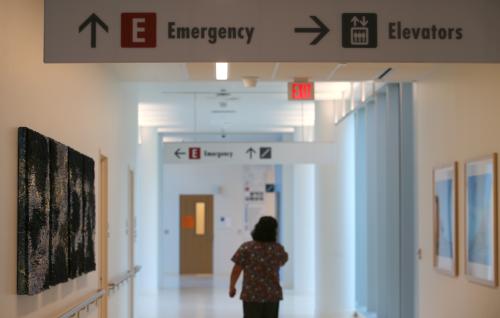What’s the latest in health policy research? The Essential Scan, produced by the USC-Brookings Schaeffer Initiative for Health Policy, aims to help keep you informed on the latest research and what it means for policymakers. If you’d like to receive the biweekly Essential Scan by email, you can sign up here.
Risk Adjustment in Medicare’s Cardiac Payment Bundles May Lessen Penalties for Hospitals with Complex Patient Loads
Effects of Risk Adjustment on Estimated Reconciliation Payments per Episode Across Hospital Characteristics in Medicare’s Cardiac Bundled Payment Program
 Study by: Adam A. Markovitz, Chandy Ellimoottil, Devraj Sukul, Samyukta Mullangi, et al
Study by: Adam A. Markovitz, Chandy Ellimoottil, Devraj Sukul, Samyukta Mullangi, et al
CMS has moved towards bundled payment models as a way to incentivize hospitals to improve efficiency and better coordinate care across the patient experience. In contrast to previous bundled payment programs, which are benchmarked to the indivdiual hospital’s experience, the proposed (but recently abandoned) mandatory program would have transitioned the benchmark to experience in a geographic area. But the proposed program did not include risk adjustment for patient medical complexity and social risk factors. An analysis of Medicare fee-for-service beneficiaries hospitalized for acute myocardial infarction and coronary artery bypass graft between 2011 and 2013 found high-severity, safety-net, and minority-serving hospitals would face additional annual penalties of $13.6 million, $2.0 million, and $2.6 million, respectively, in the absence of risk adjustment. The authors found that adjusting for medical complexity and social risk factors significantly narrowed the gap between high-severity, safety-net, and minority serving hospitals and their counterparts. Given these findings, the authors suggest that CMS consider including risk adjustment in the bundled payment programs to ensure hospitals that care for sicker and socially-at-risk patients are not disproportionately penalized or incentivized to reduce care for these populations. Full study here.
Almost 30 Percent of Practices Failed to Report Performance Data in Year One of Medicare’s Value-Based Payment Modifier Program
Percentages of Practices in the Physician Value-Based Payment Modifier Program that had Penalties or Bonuses in 2015 – by Practice Characteristics
 Study by: Karen E. Joynt Maddox, Arnold M. Epstein, Lok Wong Samson, and Lena M. Chen
Study by: Karen E. Joynt Maddox, Arnold M. Epstein, Lok Wong Samson, and Lena M. Chen
Medicare’s Physician Value-Based Payment Modifier (VM) program is a pay-for-performance program that rewards physicians for providing high-quality, low-cost care to Medicare fee-for-service beneficiaries. According to a new study, almost 30 percent of the 1,010 practices subject to the program failed to report performance data and received a 1 percent reporting-based penalty. Practices that failed to meet the reporting standards tended to have younger patient populations, higher proportions of minority and disadvantaged populations, were smaller, and less likely to meet the standard for high meaningful use of electronic health records. Based on these findings, the authors recommend policymakers consider providing technical support to practices targeted at vulnerable populations to ensure that such value-based payment programs do not inadvertently widen existing disparities in care. Full study here.
Medicare Advantage Plans Outperformed Traditional Fee-for-Service Plans Along 16 Clinical Quality Measures
Study by: Justin W. Timbie, Andy Bogart, Cheryl L. Damberg, Marc N. Elliott, et al
Although Medicare Advantage (MA) plans have more than doubled their total enrollment in the last 10 years, there have been few recent studies comparing MA plans to traditional fee-for-service (FFS) plans along dimensions of patient experience and clinical quality. A new study comparing performance among plans in 3 states (California, New York, and Florida) along 22 measures found that MA plans outperformed FFS on all clinical quality measures and most patient experience measures, though the magnitude of the differences varied considerably. However, while MA enrollees reported better experiences overall, FFS beneficiaries reported better access to needed care. The authors also found significant variation between different plan types– noting that differences in performance were consistently larger for MA-HMOs compared with MA-PPOs. This study is consistent with previous research finding similar or higher satisfaction and quality in MA plans, which is important as the program continues to grow in size, although it’s unclear if patient mixes or costs play a role. Full study here.
Greater Medicaid Assistance with Medicare Cost Sharing Linked to Improved Access for Dual Medicare/Medicaid Eligible Beneficiaries
Study by: Nan Tracy Zheng, Susan Haber, Sonja Hoover and Zhanlian Feng
Low-income Medicare beneficiaries receiving Medicaid (also known as dual eligible beneficiaries) make up approximately one-fifth of the nation’s Medicare enrollees and account for 36 percent of total Medicaid spending. A new study assesses whether higher Medicaid payments for Medicare cost-sharing are associated with increased access to care for dually-eligible patients. The researchers found that states varied in the percentage of cost sharing paid by Medicaid programs, ranging from 11 to 98 percent for evaluation and management (E&M) services in 2009. Paying a higher percentage of the Medicare cost sharing is associated with higher likelihood of using office and other outpatient E&M services and lower likelihood of using safety-net providers for dually eligible beneficiaries, compared to beneficiaries solely receiving Medicare coverage. These findings suggest that Medicaid programs could improve access to care for dual eligible enrollees by covering the full Medicare cost sharing amount. Full study here.
Medical Malpractice Reform has Little Impact on Health Spending
Study by: Hao Yu, Michael Greenberg and Amelia Haviland
There is debate among policymakers on whether the threat of medical malpractice lawsuits raises health spending by forcing doctors to practice medicine “defensively.” Conservative lawmakers have advocated for a set of reforms to the civil justice system, broadly called “tort reform,” that would afford more legal protections to doctors, arguing that these reforms will lower unnecessary health spending without negatively affecting quality of care. However, a new study that uses data on state level tort reform efforts and individual-level health care costs finds that eight of the ten most common reforms to tort law had no observable effect on individual health spending. Furthermore, of the two reforms that did affect health spending, one actually increased individual health spending by making doctors practice even more defensively. These results show that tort reform may not be important for reducing health spending and highlights the importance of fully considering the incentive structures created by well-intended public policies. Full study here.












Commentary
The essential scan: Top findings in health policy research
December 22, 2017